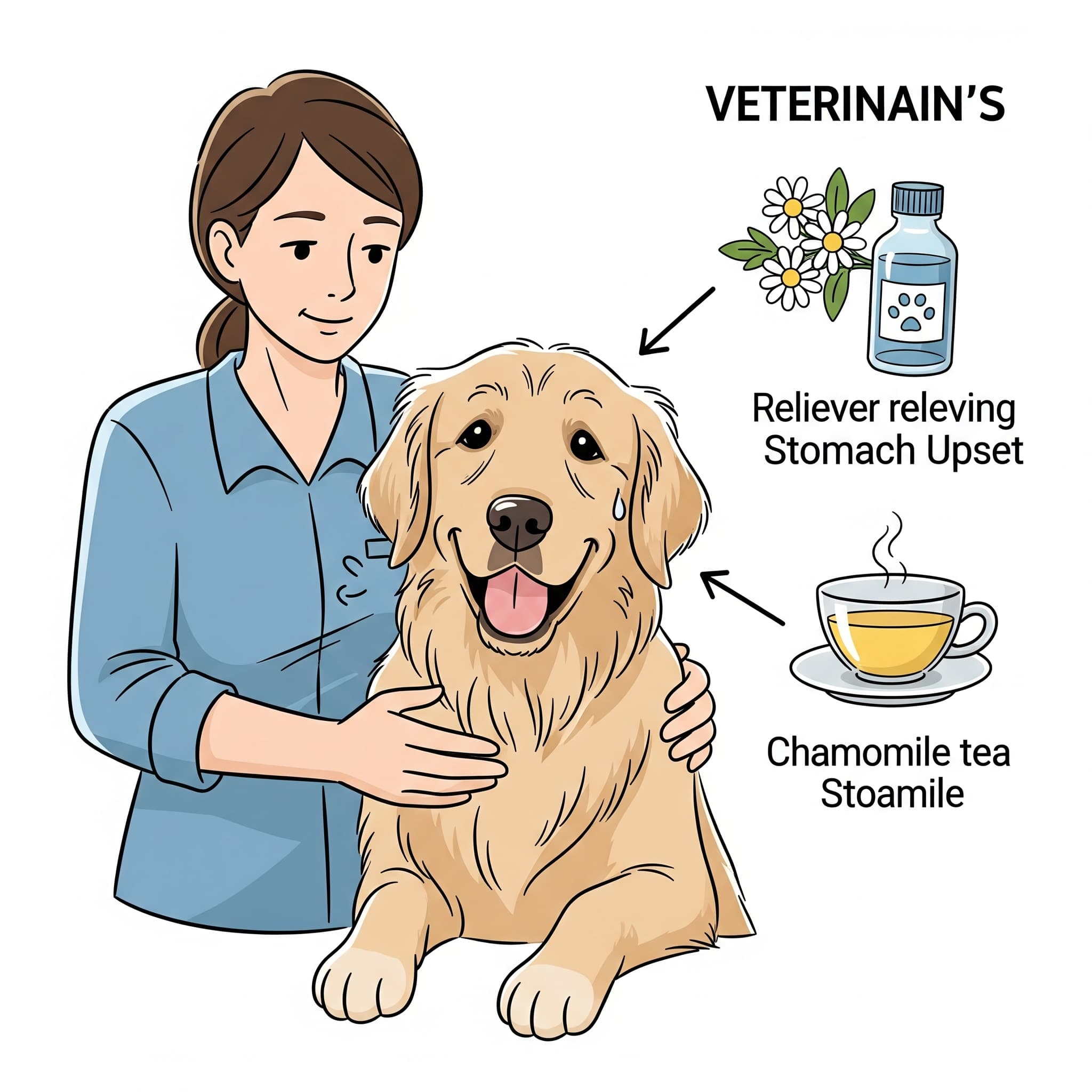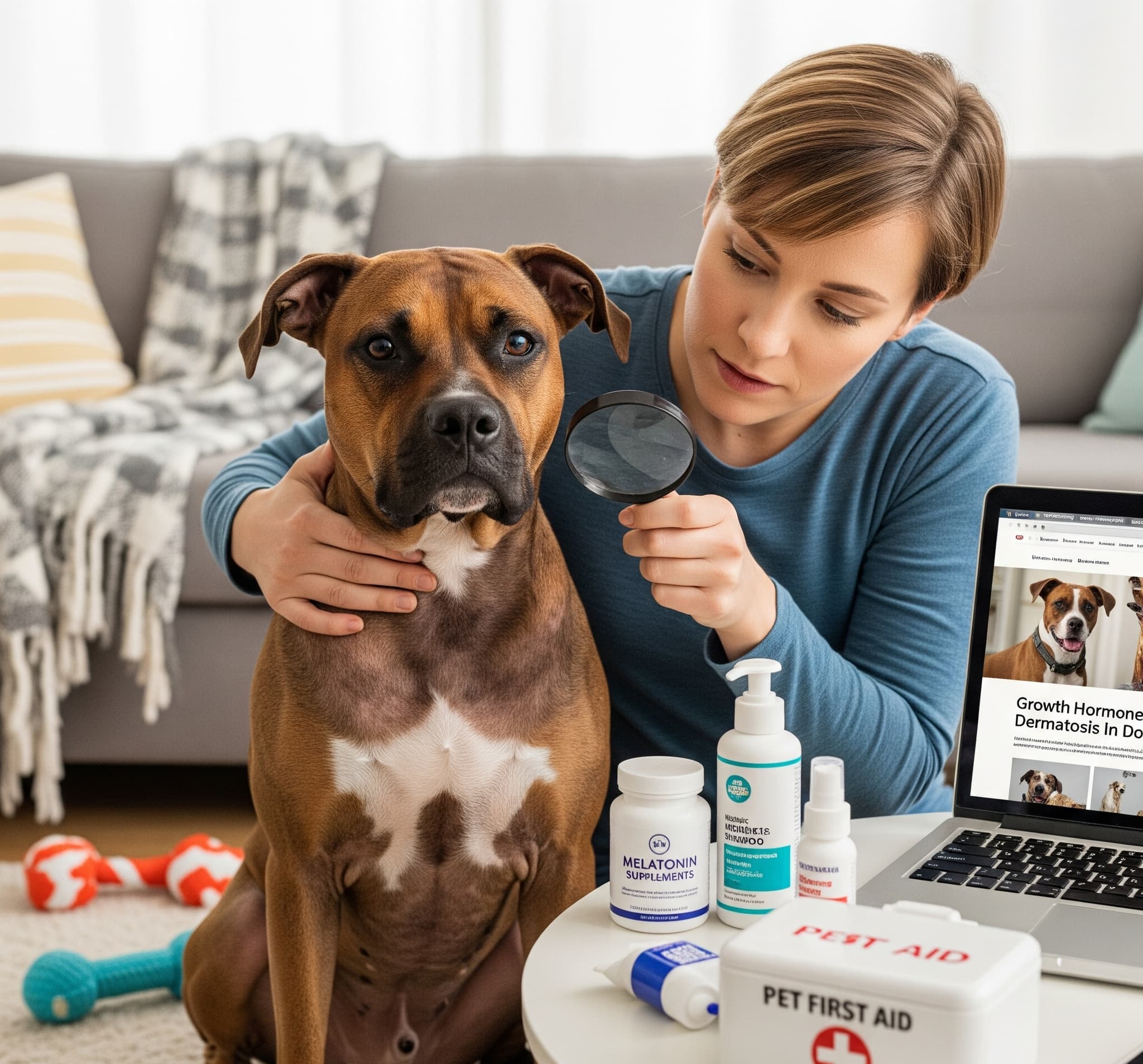Busy Pet Parent’s Quick Guide: Dog Upset Stomach Relief
Quick, safe remedies for dog upset stomach. Learn what to give your dog immediately when stomach issues strike. Vet-approved solutions for busy pet parents.
Introduction
Your dog is whining, refusing food, and you just heard that dreaded stomach gurgling sound. As a busy pet parent, you need fast, reliable solutions when your furry friend has an upset stomach. You don’t have time to panic or wonder what works and what doesn’t.
Dog stomach issues happen to every pet parent. The good news? Many safe, effective remedies are sitting right in your kitchen. This guide gives you instant answers about what you can give your dog for upset stomach relief, plus red flags that mean it’s time to call the vet.
To help you navigate this guide quickly and find exactly what you need, here are the key sections we’ll explore:
- Immediate Signs Your Dog Has an Upset Stomach
- Safe Kitchen Ingredients That Actually Work
- The 24-Hour Home Treatment Plan
- When to Stop Home Remedies and Call Your Vet
- Prevention Tips for Future Stomach Issues
Immediate Signs Your Dog Has an Upset Stomach (H2)
Spotting stomach trouble early helps you act fast. Watch for these clear warning signs:
Your dog may drool more than usual or lick their lips repeatedly. Many dogs get restless and pace around the house. You might hear loud stomach gurgling or see them eating grass obsessively.
Loss of appetite is common. Your normally food-motivated pup suddenly shows zero interest in meals or treats. Some dogs drink more water than normal, while others avoid their water bowl completely.
Vomiting and diarrhea are obvious red flags. But even without these symptoms, dogs with upset stomachs often have a hunched posture or seem uncomfortable when you touch their belly area.
The key is knowing your dog’s normal behavior. Any sudden change in eating, drinking, or energy levels could signal digestive distress.
Safe Kitchen Ingredients That Actually Work (H2)
When your dog has an upset stomach, these common household items provide gentle relief:
Plain White Rice works like magic for most dogs. Cook it with extra water to make it soft and easy to digest. Rice helps firm up loose stools and provides gentle energy without irritating the stomach.
Plain Boiled Chicken offers protein that’s easy on the digestive system. Remove all skin, bones, and seasoning. Shred it into small pieces and mix with rice for a healing meal.
Pure Pumpkin (not pie filling) soothes inflammation and adds fiber. Start with just one tablespoon for small dogs or two tablespoons for larger breeds. Too much can cause more stomach upset.
Bone Broth made for dogs provides hydration and nutrients. Make sure it contains no onions, garlic, or excessive salt. You can buy dog-safe versions or make your own using just bones and water.
Plain Greek Yogurt with live cultures helps restore healthy gut bacteria. Give only small amounts – a teaspoon for small dogs, a tablespoon for big dogs. Skip this if your dog is lactose intolerant.
Never give chocolate, grapes, onions, garlic, or anything with artificial sweeteners. These items are toxic to dogs and will make stomach problems much worse.
The 24-Hour Home Treatment Plan (H2)
Here’s your step-by-step action plan for the first 24 hours:
Hour 0-4: Fast and Observe Remove all food but keep fresh water available. Let your dog’s stomach rest completely. This prevents more irritation and gives you time to assess how serious the problem is.
Hour 4-8: Small Water Portions Offer small amounts of water every hour. If your dog vomits water immediately, wait another hour before trying again. Dehydration happens fast with stomach issues.
Hour 8-12: First Food Test Cook plain white rice with extra water until very soft. Offer just 2-3 tablespoons for small dogs, or 1/4 cup for large dogs. If they keep this down for 2 hours, you can proceed.
Hour 12-18: Add Protein Mix small pieces of plain boiled chicken with the rice. Keep portions tiny – about half of what they normally eat. Success here means you’re on the right track.
Hour 18-24: Monitor Progress If everything stays down, gradually increase portion sizes. Add a small amount of pure pumpkin to help with digestion. Your dog should show improved energy and interest in food.
Document everything during this period. Note what stays down, what comes back up, and any changes in behavior or symptoms.
When to Stop Home Remedies and Call Your Vet (H2)
Some situations require immediate professional help. Stop home treatment and contact your veterinarian if you notice:
Severe Dehydration Signs Check your dog’s gums – they should be pink and moist. Dry, sticky gums mean dehydration. Pinch the skin on their neck; it should snap back immediately. Slow return indicates fluid loss.
Blood in Vomit or Stool Any sign of blood requires immediate attention. This includes bright red blood or dark, coffee-ground looking material in vomit.
Repeated Vomiting If your dog vomits more than 3 times in 24 hours, or can’t keep water down for more than 4 hours, call your vet immediately.
Extreme Lethargy or Pain Dogs hiding, refusing to move, or crying when touched need professional evaluation. Trust your instincts – you know your dog best.
No Improvement After 24 Hours If home treatment doesn’t show clear progress within a full day, it’s time for professional help. Prolonged stomach issues can lead to serious complications.
Emergency Situations (H3)
Call an emergency vet immediately if your dog shows:
- Bloated, hard belly
- Dry heaving without producing vomit
- Pale gums or weakness
- Difficulty breathing
- Collapse or inability to stand
These symptoms can indicate life-threatening conditions like bloat or poisoning.
Puppies and Senior Dogs Need Extra Care (H3)
Very young and older dogs get sicker faster. If your puppy under 6 months or senior dog over 8 years shows stomach upset, contact your vet within 12 hours rather than waiting a full day.
Prevention Tips for Future Stomach Issues (H2)
Smart prevention saves you stress and keeps your dog healthier:
Feed Consistent, High-Quality Food Sudden diet changes cause most stomach upsets. When switching foods, do it gradually over 7-10 days by mixing increasing amounts of new food with decreasing amounts of old food.
Control What They Eat Outside Dogs love to eat garbage, dead animals, and random stuff on walks. Train a strong “leave it” command and watch them closely during outdoor time.
Manage Stress and Anxiety Many dogs get stomach issues from stress. Keep routines consistent and provide a calm environment. Consider puzzle toys or calming supplements for anxious dogs.
Regular Vet Checkups Annual exams catch problems early. Discuss your dog’s digestive health with your vet and ask about the best diet for their specific needs.
Know Your Dog’s Triggers Keep a simple food diary if your dog has recurring stomach issues. Note what they ate, when symptoms started, and how long problems lasted. Patterns help identify specific triggers.
Safe Treat Guidelines Stick to dog-specific treats and avoid giving table scraps. Human food often contains ingredients that upset canine stomachs, even if they seem harmless.
Conclusion
Dog upset stomach episodes don’t have to send you into panic mode. With the right knowledge and quick action, you can provide effective relief using safe ingredients from your own kitchen.
Remember the golden rule: start with fasting, then introduce bland foods slowly. Plain rice, boiled chicken, and pure pumpkin work for most dogs. But always trust your instincts about when to seek professional help.
Prevention through consistent feeding, environmental management, and regular vet care keeps most stomach issues at bay. When problems do occur, you now have a clear 24-hour action plan to follow.
Ready to be a more confident pet parent? Save this guide for quick reference during your next doggy stomach emergency. Share it with other pet parents who might need these life-saving tips!
What’s your go-to remedy when your dog has tummy troubles? Drop a comment below and help other pet parents learn from your experience!




Post Comment